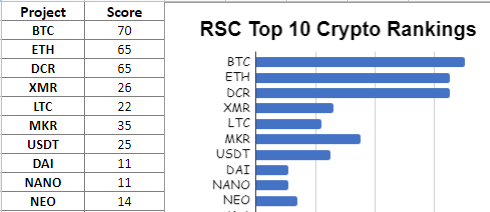
Doc's Daily Commentary

Mind Of Mav
How You Can Profit From The Coming Devaluation
Between 1929 and 1939, millions of Americans lost billions of dollars in savings and investments. The stories have been told and retold so many times that we tire of hearing them. But forgotten are the thousands of Americans who made their fortunes during the same period of time. These are the people who “sold short” during 1929. They are the ones who removed their cash from the banks before they closed, and then used their cash to buy businesses and homes when prices were at rock bottom and on one else had any cash.
These are the opening lines to Harry Browne’s 1970 bestseller, How You Can Profit From The Coming Devaluation.
For the unfamiliar, How You Can Profit From The Coming Devaluation is a famous investment book that explains how monetary policy can lead to financial disaster.
Now, obviously this was before the time of computers & Bitcoin, and I could easily fill this entire newsletter with nothing but Harry Browne quotes since the first section of How You Can Profit From The Coming Devaluation is all about how money works, what causes inflation, and why governments control currency . . . but, if you want to understand the economic concepts fueling things like crypto, or you’d like to learn more about monetary inflation — read this book.
Harry Browne does an outstanding job taking complex subjects and breaking them down in a way that’s comprehensive yet easy to understand. Just take a look at this passage which explains inflation:
America is the land of opportunity. So I’m going to suggest that you and I go into business together (at least in your imagination, so that I can pose my puzzle to you). You and I form a partnership, a company that prints counterfeit money. We print 1,000 new $20 bills. Then we go into San Diego where our affluence (or lack of it) is not known to anyone. We start spending the bills and are immediately praised by the local merchants and the newspapers. They proclaim that it is a great thing for San Diego that we have come to town, for we’re bringing prosperity to a city that was in a recession. Two weeks later, we leave town with $20,000 worth of goods. The townspeople bid us grateful farewell for all the business we have brought to them. It’s obvious that we have benefited from the situation. We traded paper dollars with no real value for products that have real value. Assuming that no one ever learns our little secret, has our gain actually hurt anyone else? In other words, does anyone ever pay for the benefits gained by counterfeiters? Set the book down for as long as it takes to think about that question. Did anyone lose in order for us to gain from our counterfeit spree? And, if so, who? What is your answer? The merchants who received the counterfeit bills did not lose. They could pass the bills on to others for things they wanted. (Part of our assumption was that no one would discover the counterfeiting.) We gained; the merchants didn’t lose. Apparently, no one lost.
But we’ve overlooked a few people. Not just a few, in fact. We’ve overlooked everyone else in the marketplace. For everyone else will lose in order to make this gain possible. We can see this easily as we imagine our car leaving San Diego- loaded with goods removed from San Diego’s marketplace. We leave San Diego’s residents with less property than they had before we came. There will be fewer goods available to divide up among the people there. In exchange, they received additional paper money that will circulate in the community. But paper money isn’t wealth. It simply means there is now more paper money to bid for fewer goods and services. Referring back to our price level formula, we see that the general price level is determined by dividing the available goods and services into the available money supply. Since the money supply has gone up and the goods and services have decreased, the result can only be a higher price level in San Diego. The price increase will be irregular. Those who get their hands on the counterfeit money first will gain from it; for they’ll have extra spending money, and prices will not have gone up yet. But as that extra paper money passes through the community, it will bid prices upward. The other people in the marketplace will be paying for our gain- and they will do that through the higher prices they pay for each product.
While the economics portion of the book is highly informative, there’s a second part to this book. The later part of How You Can Profit From The Coming Devaluation does exactly as the title suggests. It gives you an investment strategy for inflationary environments as well as recessions and depressions.
Here are Harry Browne’s recommendations:
One month of physical cash.
Foreign bank account (Swiss francs).
Silver coins.
Silver bullion.
Gold stocks.
Somewhere safe to avoid civil unrest.
I thought it would be fun to analyze this portfolio and also discuss “Defensive Investing.”:
One month physical cash — The idea here is pretty simple. Have easily accessible money that you can use to pay your bills, in case there’s a problem with the bank. Sounds stupid, but over the last month we’ve seen countless stories about Ukrainian and Russian civilians who can’t withdraw money.
Swiss bank account — For some reason, a lot of goldbugs and sovereign individual types love the idea of holding foreign currency. A lot of international investing websites talk up the benefits of having a savings account in Chile or Georgia, where you can get 6–8% annual interest. There are a few problems with this. One, it’s incredibly difficult for U.S. citizens to open a foreign bank account. Two, a lot of alternative asset investors are intentionally obtuse about stocks and pretend like all stocks are highly speculative. Owning a Swiss company (like Nestle) or investing in a global conglomerate (like Procter & Gamble) would give you “international exposure” and “currency diversification,” without hassle of foreign banking.
Silver coins — Another alternate asset. At one time, the silver “Mercury Dime” was widely available at every U.S. bank and had a value of $0.10. Today, they are worth $1.62. A zero-effort 16-bagger. Right now, Nickels have something like $0.085 worth of metal content. This means you take a $100 bill to the bank and legally exchange it for 2,000 nickels with a combined metal value of $170.
Silver bullion — How You Can Profit From The Coming Devaluation was published before it became legal for U.S. citizens to own gold. As such, the book recommends buying silver bullion and storing it overseas (as a hedge against all precious metals being confiscated). Like foreign banking, alternative asset investors obsess over hiding gold or crypto all around the world. If you’re into crypto, you could very easily put your funds into a cold storage wallet. And if you want a mobile, physical asset; learn about watches or luxury goods that are highly tariffed outside the US. Slapping a watch on your wrist, putting an iPhone in your pocket, and throwing two or three bottles of Dior or Chanel perfume in your bag is a lot easier than hiding bullion in your secret bank vault.
Gold stocks — Just look at gold stock B2Gold. It’s a profitable company that recently reported higher production outputs than analysts had predicted. Shares are still down across the past 12-months. Realistically, most commodities do well during times of inflation. Oil is up. Wheat hit new highs. You get the picture. While gold does have industrial uses, commodities like food or energy are more practical and “essential.”
Safe haven — Survivalists and economic doomsayers usually pitch a “Retreat” as some sort of fallout shelter or off-grid hideaway. In reality, you can simply go to a relaxing town or city with little to no crime. This can double as a currency or commodity hedge, too. For example, our friend Checkmate has escaped the oppressive laws and restrictions of his homeland Australia for the more welcoming climate and conditions in Mexico.
With remote work more popular than ever, it makes sense to live somewhere that’s comfortable for you.
Overall, I think How You Can Profit From The Coming Devaluation is a great read for understanding economics and how financial problems arise. However, like many goldbug or financial disaster books, the investment portion leaves a lot to be desired. Still, this section does provide some interesting ideas and can serve as a jumping off point for your own thought experiments.

The ReadySetCrypto "Three Token Pillars" Community Portfolio (V3)
Add your vote to the V3 Portfolio (Phase 3) by clicking here.
View V3 Portfolio (Phase 2) by clicking here.
View V3 Portfolio (Phase 1) by clicking here.
Read the V3 Portfolio guide by clicking here.
What is the goal of this portfolio?
The “Three Token Pillars” portfolio is democratically proportioned between the Three Pillars of the Token Economy & Interchain:
CryptoCurreny – Security Tokens (STO) – Decentralized Finance (DeFi)
With this portfolio, we will identify and take advantage of the opportunities within the Three
Pillars of ReadySetCrypto. We aim to Capitalise on the collective knowledge and experience of the RSC
community & build model portfolios containing the premier companies and projects
in the industry and manage risk allocation suitable for as many people as
possible.
The Second Phase of the RSC Community Portfolio V3 was to give us a general idea of the weightings people desire in each of the three pillars and also member’s risk tolerance. The Third Phase of the RSC Community Portfolio V3 has us closing in on a finalized portfolio allocation before we consolidated onto the highest quality projects.
Our Current Allocation As Of Phase Three:

Move Your Mouse Over Charts Below For More Information

The ReadySetCrypto "Top Ten Crypto" Community Portfolio (V4)
Add your vote to the V4 Portfolio by clicking here.
Read about building Crypto Portfolio Diversity by clicking here.
What is the goal of this portfolio?
Current Top 10 Rankings:

Move Your Mouse Over Charts Below For More Information

Our Discord
Join Our Crypto Trader & Investor Chatrooms by clicking here!
Please DM us with your email address if you are a full OMNIA member and want to be given full Discord privileges.
